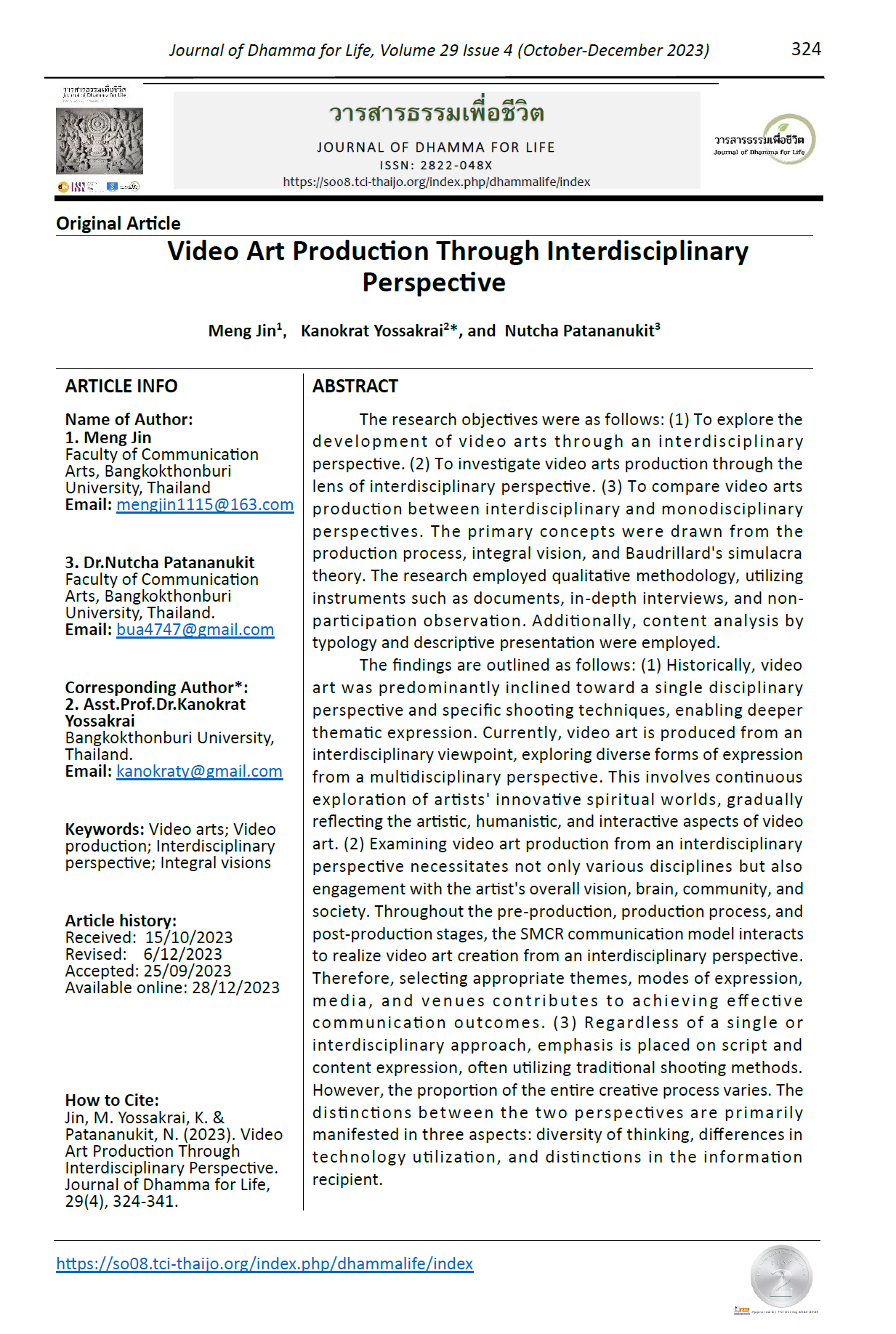Video Art Production Through Interdisciplinary Perspective
Main Article Content
Abstract
The research objectives were as follows: (1) To explore the development of video arts through an interdisciplinary perspective. (2) To investigate video arts production through the lens of interdisciplinary perspective. (3) To compare video arts production between interdisciplinary and monodisciplinary perspectives. The primary concepts were drawn from the production process, integral vision, and Baudrillard's simulacra theory. The research employed qualitative methodology, utilizing instruments such as documents, in-depth interviews, and non-participation observation. Additionally, content analysis by typology and descriptive presentation were employed.
The findings are outlined as follows: (1) Historically, video art was predominantly inclined toward a single disciplinary perspective and specific shooting techniques, enabling deeper thematic expression. Currently, video art is produced from an interdisciplinary viewpoint, exploring diverse forms of expression from a multidisciplinary perspective. This involves continuous exploration of artists' innovative spiritual worlds, gradually reflecting the artistic, humanistic, and interactive aspects of video art. (2) Examining video art production from an interdisciplinary perspective necessitates not only various disciplines but also engagement with the artist's overall vision, brain, community, and society. Throughout the pre-production, production process, and post-production stages, the SMCR communication model interacts to realize video art creation from an interdisciplinary perspective. Therefore, selecting appropriate themes, modes of expression, media, and venues contributes to achieving effective communication outcomes. (3) Regardless of a single or interdisciplinary approach, emphasis is placed on script and content expression, often utilizing traditional shooting methods. However, the proportion of the entire creative process varies. The distinctions between the two perspectives are primarily manifested in three aspects: diversity of thinking, differences in technology utilization, and distinctions in the information recipient.


